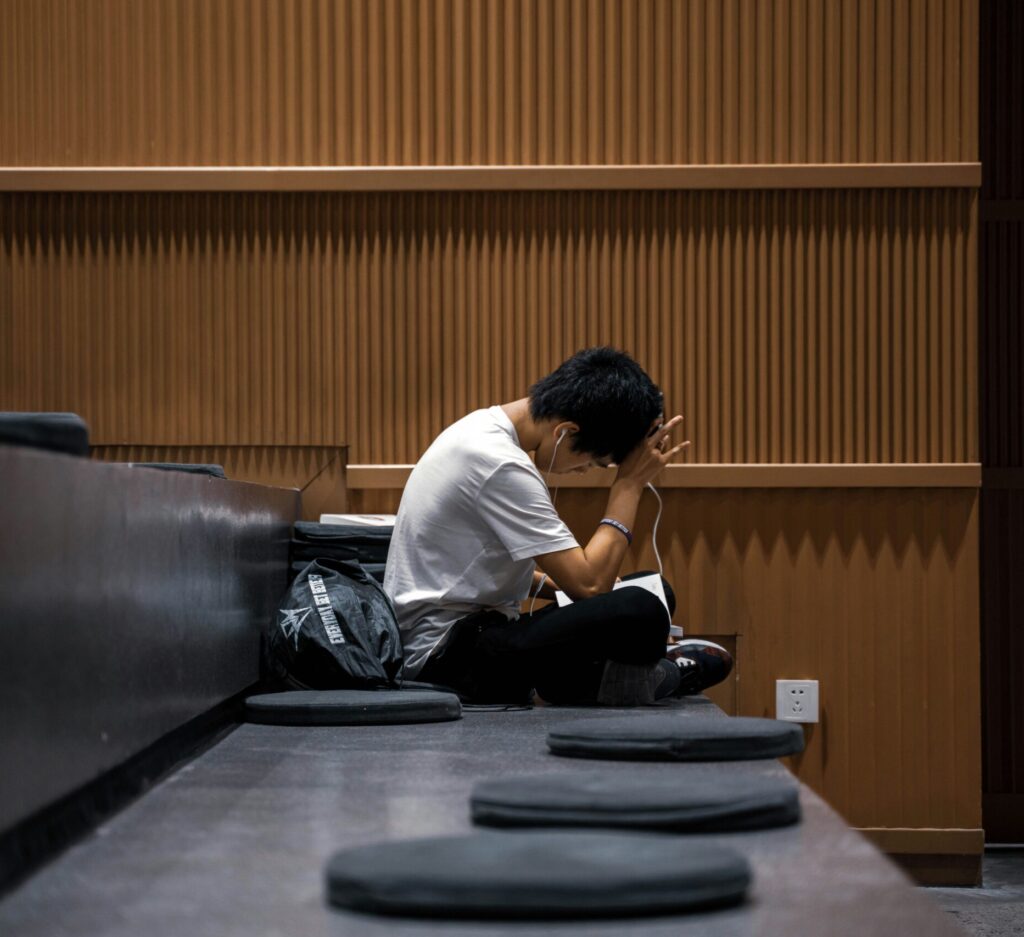Introduction to Teacher Burnout

For many educators, it feels like more than just a tough year. It’s a constant battle against overwhelm. Teacher burnout is very real. This growing challenge deeply impacts teachers. It also affects the students they work so hard for. Think of it as deep, chronic stress. It leaves you utterly drained and disconnected. Your efforts might feel meaningless. These heavy feelings bring constant fatigue. You may feel irritable. Performance can dip. A quiet loss of passion often follows.
The numbers don’t lie. Over half of teachers today battle intense stress. They report exhaustion. This isn’t just isolated cases. It’s a widespread concern. It affects educators everywhere. What fuels this crisis? Often, it’s endless workload. Feeling unsupported by administration hurts. The emotional toll of engaging students and families is high. This all happens in a high-pressure environment. It’s a tough cycle. Professional duties worsen stress. Mental health suffers. Job satisfaction declines.
Spotting the early signs of burnout is crucial. This helps individual teachers and schools. Watch for things like fading motivation. More days absent are a sign. Feeling constantly overwhelmed is another. These quietly undermine your teaching effectiveness. They also hurt student success. Schools face high turnover. There’s a shortage of great teachers. Tackling burnout is not just a nice idea. It’s truly essential. This supports a vital profession. Let’s shine a light on these challenges. We can build a path to more effective stress management. We’ll dive into this throughout the article.
Understanding the Causes of Teacher Burnout

Teacher burnout is increasingly recognized as a significant concern within the educational landscape, driven by a myriad of factors that interplay to create an overwhelming environment for educators. One of the primary causes of burnout is an excessive workload, often characterized by the dual demands of teaching and administrative responsibilities. Teachers frequently report spending countless hours on lesson planning, grading, and addressing diverse student needs, which can lead to feeling overburdened and unsupported.
Additionally, the lack of institutional support is a crucial aspect contributing to teacher burnout. Many educators find themselves isolated without guidance, mentorship, or resources to help manage their responsibilities effectively. This lack of support can amplify feelings of helplessness and frustration, leaving teachers to navigate their challenges alone. Sometimes, these experiences can indicate a deeper, more systemic problem. Learning the 7 signs of a toxic work environment can help you identify and address such situations. It is essential to foster a culture of collaboration where teachers can seek assistance and share best practices, thus reducing the isolation that can lead to undermining mental health.
Emotional exhaustion is another significant component of teacher burnout. The very nature of teaching requires emotional labor, as educators must engage with students, parents, and colleagues daily. The constant demand to remain emotionally available can deplete a teacher’s energy over time, contributing to a state of fatigue that compromises both their personal wellbeing and their effectiveness in the classroom.
Unrealistic expectations, both self-imposed and external, further exacerbate teacher burnout. The pressure to meet academic standards, manage diverse learning environments, and fulfill various roles can lead educators to feel as though they are perpetually falling short. These factors, working in tandem, create a complex web that can negatively impact not only teachers’ professional lives but also their personal health.
It is crucial to acknowledge these underlying causes and address them to create a more supportive and sustainable educational environment, ultimately improving the experiences of both teachers and students alike.
Recognizing the Symptoms of Burnout

Teacher burnout is a legitimate concern in the educational sector, significantly impacting both educators and students. Recognizing the symptoms is pivotal for early intervention and recovery. One of the foremost indicators of burnout is chronic fatigue. Educators may feel drained, lacking the energy needed to engage in their responsibilities fully. This fatigue can stem from long hours, emotional demands, and the ever-increasing expectations placed on teachers.
Another common symptom is a noticeable decrease in performance. Teachers experiencing burnout might find it challenging to maintain their usual standards, leading to feelings of inadequacy. They may struggle to complete lesson plans, meet deadlines, or stay organized, which can further exacerbate their feelings of unworthiness and stress. Consequently, this decline in productivity can create a damaging cycle, where reduced effectiveness leads to increased pressure and frustration.
Detachment from work is also a hallmark of teacher burnout. Educators may feel an emotional disconnect from their students, colleagues, or the overall educational environment. This detachment can manifest as irritability, cynicism, or a lack of enthusiasm for teaching—qualities that are essential for fostering a positive learning atmosphere. When teachers start to withdraw from their interpersonal connections within the school, it further diminishes their sense of fulfillment and purpose in their roles.
To aid in self-assessment, educators can use a simple checklist to help identify these symptoms. Questions may include: Are you consistently fatigued? Have you noticed a decline in the quality of your work? Do you often feel detached or disinterested in your classes? By honestly evaluating their experiences against these symptoms, teachers can take the vital first step towards recovery and implement effective stress management strategies.
The Importance of Self-Care for Teachers

Self-care is an essential aspect of maintaining mental and physical well-being, particularly in high-stress professions such as teaching. Educators frequently encounter burnout due to the demanding nature of their work, which often includes long hours, emotional labor, and the pressure to meet diverse student needs. It is, therefore, crucial for teachers to prioritize self-care, not merely as an afterthought but as a necessity for sustainable teaching practices.
Integrating self-care into a busy schedule can be challenging; however, even small modifications can lead to significant improvements in one’s overall well-being. One effective self-care practice is mindfulness, which encourages individuals to focus on the present moment. Mindfulness exercises, such as meditation or simple breathwork, can help reduce stress and promote emotional resilience. By setting aside a few minutes each day, educators can cultivate a greater sense of peace and clarity that ultimately benefits their performance in the classroom.
Physical exercise is another indispensable self-care strategy. Regular physical activity has been shown to alleviate symptoms associated with stress, anxiety, and depression. Teachers can incorporate movement into their daily routine, whether through brisk walks, cycling, or yoga sessions. Engaging in physical exercise not only enhances physical health but also fosters mental clarity and emotional stability, equipping teachers to handle the demands of their profession more effectively.
Establishing boundaries is equally paramount in combating teacher burnout. Many educators feel compelled to extend their working hours and take on additional responsibilities, often to the detriment of their personal time. By learning to say no and delegating tasks when possible, teachers can create a healthier work-life balance. Prioritizing self-care through mindfulness, physical exercise, and setting clear boundaries can significantly mitigate the risk of burnout, ensuring that teachers remain energized and passionate about their vital role in education.
Building a Supportive Community

Teacher burnout is an increasing concern in the education sector, often exacerbated by feelings of isolation and overwhelming workloads. Establishing a supportive community can significantly alleviate these stressors and promote emotional well-being among educators. A robust network of colleagues and mentors serves as an essential resource, enabling teachers to share challenges, strategies, and successes while nurturing a sense of belonging.
One effective strategy to cultivate these networks is through professional learning communities (PLCs). These groups comprise educators who collaborate on teaching practices and curriculum development. In a PLC, teachers engage in reflective practices, sharing their experiences, insights, and resources with one another. Such collaborative efforts not only foster professional growth but also help combat feelings of loneliness that may lead to burnout.
Moreover, peer support groups can provide targeted emotional assistance. These groups allow educators to come together in a safe environment, facilitating open discussions about stressors in their profession. Regular meetings within these peer-led forums create spaces where teachers can express concerns, celebrate achievements, and develop coping mechanisms. This interaction can greatly reduce the impacts of stress, leading to enhanced job satisfaction.
Additionally, fostering connections outside the immediate school environment can be beneficial. Networking with professionals from different schools or districts through conferences, online platforms, or local meet-ups encourages the exchange of innovative ideas and methods. Such interactions not only broaden one’s teaching perspective but also help in building a diverse support system.
Creating a supportive community is integral to mitigating stress and teacher burnout. By engaging in professional learning communities and forming peer support networks, educators can cultivate a collaborative environment that uplifts and empowers its members. Ultimately, such initiatives facilitate resilience against the challenges faced in the educational landscape.</p>
Practical Stress Management Techniques

Teacher burnout is a significant concern in the educational sector, often resulting from excessive stress and overwhelming workloads. Utilizing effective stress management techniques can help educators mitigate these challenges. One vital approach is efficient time management. Teachers should consider implementing a structured schedule that allocates specific periods for lesson planning, grading, and classroom activities. By prioritizing tasks and utilizing tools such as calendars or to-do lists, educators can minimize feelings of being overwhelmed and enhance productivity.
Another key strategy involves setting realistic goals. Teachers often face high expectations, both from themselves and from their institutions. To combat the pressure associated with these expectations, it is crucial to establish achievable, short-term objectives that contribute to long-term goals. Teachers might employ the SMART criteria (Specific, Measurable, Achievable, Relevant, Time-bound) to outline their objectives. This planning enables educators to track progress and celebrate small victories, thus fostering motivation while reducing stress.
Additionally, incorporating relaxation exercises into the daily routine can significantly improve mental well-being. Techniques such as deep breathing, mindfulness meditation, or yoga can provide moments of respite amidst a busy schedule. By dedicating even a few minutes each day to relaxation, teachers can restore balance and focus, equipping themselves better to handle classroom challenges. Engaging in physical activities after school, whether through organized sports or casual walking, can also contribute to managing stress levels effectively.
For those seeking additional support in combating professional strain, certain research-backed supplements can also play a vital role in enhancing focus and promoting calm. Learn more about the [Best Stress Reducing Supplements for High Stress Careers] to further support your mental and physical well-being. Additionally, to cultivate deep inner strength and emotional fortitude, explore our curated list of the [Best Resilience Books for most stressful jobs] which offer practical strategies from leading experts.
In implementing these practical techniques, teachers can cultivate a more sustainable approach to their workload. By focusing on time management, setting realistic goals, and integrating relaxation exercises into their lives, educators can develop resilience against the strains of teaching, ultimately reducing the risk of burnout and fostering a healthier work-life balance.
Establishing Life Balance

Maintaining a healthy work-life balance is crucial for educators in preventing teacher burnout. The demands of the teaching profession often extend beyond the classroom, making it imperative for educators to cultivate boundaries between their work and personal lives. One effective strategy for achieving this balance is to establish clear work hours. By defining specific times when work can be addressed—such as checking emails or grading assignments—teachers can create a partition between their professional responsibilities and personal time. This fosters an environment where they can recharge and engage in activities that bring joy and relaxation.
Prioritization plays a vital role in mitigating the effects of stress and avoiding feelings of overwhelm. Teachers should consider identifying high-priority tasks and setting realistic goals for their workload. This allows educators to manage their time more effectively, ensuring they are not overcommitting themselves to multiple responsibilities. Recognizing that it is acceptable to decline additional obligations—such as extra-curricular activities or committee participation—can also help safeguard personal time and energy.
Another important factor in establishing a work-life balance is self-care. Educators should engage in activities that promote physical and mental well-being, such as exercising, practicing mindfulness, or pursuing hobbies. These activities serve as outlets for stress relief and greatly enhance the capacity to handle the various challenges within the profession. Furthermore, building a support network through colleagues, friends, or professional groups can provide much-needed encouragement and understanding. The collaboration and camaraderie among educators can further decrease feelings of isolation that often accompany high-stress situations in the workplace.
In conclusion, achieving a work-life balance is essential for teachers not only to foster their well-being but also to enhance their effectiveness in the classroom. By implementing strategies to separate work from personal time, prioritize responsibilities, and engage in self-care, educators can mitigate the risk of burnout and foster a more fulfilling professional experience.
When to Seek Professional Help

Teacher burnout is a real issue in education, and knowing when to reach out for professional help is a huge, vital step towards feeling better. One of the clearest signs you might need support is a constant, nagging exhaustion – whether that’s emotional, physical, or both. If you find yourself overwhelmed by work demands, feeling detached from your students or colleagues, or seeing your performance drop, it’s a strong signal that professional help could be beneficial.
The tough truth is, there’s often a stigma around mental health that stops teachers from getting the help they desperately need. But it’s crucial to remember: reaching out for help is a sign of immense strength, not weakness. Many teachers worry about judgment from colleagues or school administration. Creating a space where mental health can be talked about openly can really ease these fears. Schools and districts should also work hard to build supportive environments where teachers feel safe sharing their struggles and exploring therapy or counseling.
Therapy offers many different ways to cope with stress and burnout, from practical cognitive-behavioral techniques to more holistic approaches. These methods can help you develop solid coping strategies, manage anxiety, and deal with the emotional weight that burnout brings. Plus, counseling provides a confidential, safe space for you to express your feelings and explore your professional challenges without fear.
It’s also really helpful to recognize potential warning signs of mental health struggles in yourself, like changes in mood, increased irritability, or trouble concentrating. Taking proactive steps, like reaching out to a mental health professional , can make a huge difference in your recovery and build resilience against burnout. By considering therapy and promoting mental health awareness, we can all help create a healthier, more supportive work environment for educators.
Creating a Sustainable Teaching Practice

In the incredibly demanding world of education, building a sustainable teaching practice is essential to truly beat teacher burnout. One of the most vital steps here is setting clear boundaries both at work and in your personal life. Clearly define your work hours. Set the scope of your responsibilities. This ensures time for rest and self-care. This doesn’t just boost your personal well-being; it actually makes you a more effective teacher overall. Push back against constant demands. Overcommitment drains you. Recharging helps you inspire students.
Another key strategy is regularly checking in on your workload. Regularly reflect on your commitments. Look for unnecessary stress. Adjust anything causing it. Prioritize tasks. Delegate when possible. This streamlines your efforts. Focus more on genuine student learning. Use planners or digital apps. Track assignments, meetings, and classroom tasks. See and manage your workload efficiently.
Adapting your teaching practices is also vital for a sustainable career. This might mean differentiating your lessons to suit various learning styles, or bringing in technology that lightens your administrative load. Simplifying lesson plans to match core curriculum goals can also be super helpful, letting you focus intensely on essential skills and concepts instead of getting bogged down by overly complex projects that just lead to overwhelm.
Finally, building supportive relationships with your colleagues can hugely boost a sustainable practice. By working together, teachers can share resources and best practices, cutting down on those feelings of isolation often felt in the profession. Taking time to connect with other educators creates a community that encourages sharing experiences and strategies to cope with stress.
Conclusion
Teacher burnout is a demanding challenge, but it’s one you can absolutely overcome. By actively putting these strategies into practice prioritizing self-care, building your support system, and setting clear boundaries you’re not just surviving; you’re building a sustainable, fulfilling teaching career. Remember, your well-being matters, and investing in it allows you to truly thrive and inspire.
To continue empowering yourself with more insights and resources, [explore our full category on Resilience And Stress]
For a more comprehensive guide on cultivating long-term strength in your career, be sure to visit our [Introduction to Workplace Resilience Pillar Page] .
Keep taking care of yourself you deserve it, and your students benefit from it.




[…] Teacher Burnout is Real: Strategies for Stress Management […]
[…] Teacher Burnout is Real: Strategies for Stress Management […]